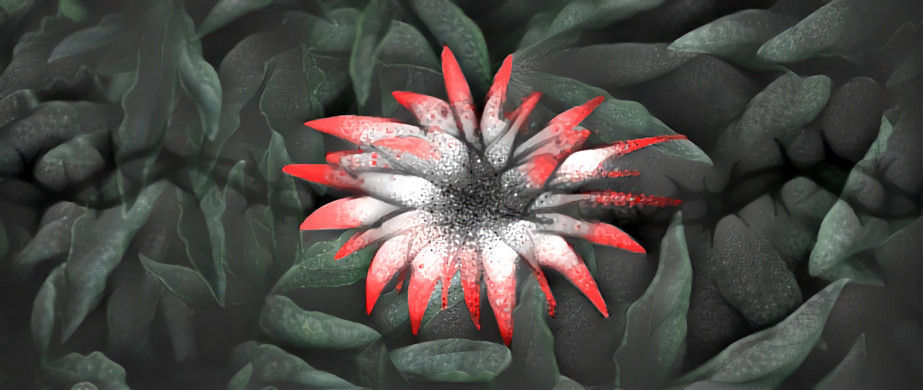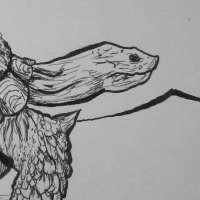Erythisblumen
Into her arms I thrust carnations and poppies, but neither did lull her to rest like the red-stained erythis flower...The dangers of magic are well-known. Kings and lords across the face of Istralar regularly have their meals tasted and checked for dark curses or strong potions, never daring to risk falling under the spell of their detractors. Indeed, there are many who live as a barrier against the harmful intent of others. It is a pity, for these fools are ever in danger of one of Gothadrun's most rare and prized of plants: the erythis flower. Despite its rarity, the flower is not unknown to those with an interest in botany - or mythology, for that matter. The erythis regularly makes appearances in Gothadruni fairytales, often functioning as the downfall of those who encounter it due to its latent magical properties. It is also one of the flowers druids and witches study during their early training, as an unexpected run-in with an erythis flower could potentially be deadly if one isn't aware of what the blossom can do. Somewhat luckily, the only current known source of erythisblumen is the Glühenwald - a thick forest located towards the southeastern edge of Gothadrun, where few have cause to go. The forest's caretakers employ serious force to ensure no foolish adventurer or traveller can wander into the area and trip across the erythisblumen. Even so, some do try. The allure of possessing one of the Living Daydreams is too much for many to handle.
Basic Information
Anatomy
Biological Traits
Ecology and Habitats
It's rude to take what isn't yours. Let them rest in their bed of choice.Erythisblumen are native to Gothadrun, and in fact can only naturally be found in the depths of Glühenwald. They enjoy the excess of water brought about by the region's consistent rainfall and flourish under the influence of the climate's warmer temperatures. Very few erythisblumen have been successfully cultivated outside of their native habitat. A collaboration between House Marchelle of the Aletheian Empire and the House of Falkenrath, known as the caretakers of the forests, lead to some of the first recent successes in external cultivation of the erythisblumen when they were able to achieve a full blossom in the year 5619. This effort was instrumental in discovering some of the plant's more obscure properties, though that research has since been ordered sealed by the combined governmental power of both Gothadrun and Aletheia.
Biological Cycle
Additional Information
Uses, Products & Exploitation
What is reality but yet another dream?Whilst the aforementioned liquid secreted by erythisblumen is incredibly dangerous, it remains the secondary danger to using an erythis flower. Breathing directly from the flower itself triggers an emission of the flower's addictive pollen, inducing sleep with extreme haste. This sleep does cure the deadly stimulant effect caused by the consumption of its liquid, but at a far greater cost than initially apparent. If the affected is able to wake up from their dreams, they will forever find reality to be a pale imitation of the dream the erythis crafted for them. The attractions of everyday life, both physical and mental, will cause them to only wish they could draw further breaths of the erythis. Should they be granted this 'blessing', they will return to the same dream that they once awakened from to continue living a second life in paradise. Even if they are only ever granted one opportunity to fall under an erythis flower's effect, the mental stain will never truly fade - not even powerful spells such as Break Enchantment or Remove Curse can cure the longing, though enchantment spells are effective in swaying attention to other subjects for a short time.
Breathe deeply. Drink of the sweet scent, and abandon that which harms you to the vulgarities of flesh.











Wow! What a really fleshed-out article! Very little I can find to critique you on this, so instead I'm just going to mention how I really enjoy the incorporation of other elements and their behavior with the living daydream, like the undead and how it's favorable for them! Then you also state a counteraction to it with the Mountain Dreambloom which adds so much flavor to the world's context! Nice job!